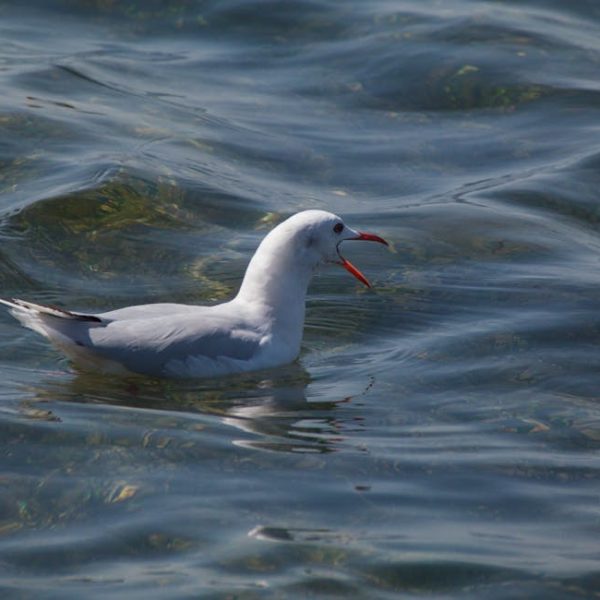In the grand theater of nature, birds often play the part of the pursued, partaking in a never-ending game of survival against various predators. While their ability to fly offers them a distinct edge, there are some clever hunters who have conquered this advantage and are adept at snuffing out these winged creatures.
Domestic and Feral Cats
Topping the list of bird predators is a creature that you might be familiar with – the domestic cat. A 2013 study estimated that cats in the U.S. alone kill between 1.3 to 4.0 billion birds each year! This immense figure underscores the predatory prowess of our feline friends. Feral cats, on the other hand, rely heavily on hunting for survival and birds become an easy target due to their accessibility and size.
Cats are meticulously skillful hunters. Their keen vision, along with an acute sense of hearing, allows them to detect even the subtlest of movements. This, coupled with their silent stalking capabilities, makes them a deadly threat to birds.
Pro Tip: To reduce the number of bird casualties, attach a brightly colored collar with a bell to your cats. This would alert birds of an impending cat attack. Also, try to keep cats indoors during dawn and dusk when birds are most active.
List: Those avian species that frequently fall prey to cats include sparrows, robins, blackbirds, and starlings.
Raptors – the Ultimate Bird Predators
Next, we take to the skies to explore the raptor family – the ultimate bird assassins. The term ‘raptor’ is derived from the Latin word ‘raptus’, meaning ‘to seize or take by force’. Coupled with their strong beaks and powerful talons, these predators are incredibly efficient bird hunters.
Raptors such as eagles, hawks, and owls have exceptional eyesight and agility in flight, which they use to their advantage during lightning-fast aerial attacks. For example, the peregrine falcon, which is known for its breathtaking speed, can capture birds mid-flight, while the Northern goshawk is adroit at maneuvering through forests to surprise its avian prey.
Comparison: While the peregrine falcon hinges on its speed and superior aerial maneuverability, the eagle relies on its immense power to subdue its prey. The Goshawk uses stealth and nimbleness to navigate dense woodland, demonstrating the diversified hunting techniques employed by these raptors.
Best Practice: As birdwatchers, pay attention to notable behavioral changes among birds, such as sudden scattering, as they might indicate the presence of a raptor.
Mammalian Predators: Foxes, Raccoons, and Others
Turning our attention to earthbound hunters, a variety of mammals have evolved predatory habits that include birds in their diets. Be it the cunning fox, the dexterous raccoon, or the tree-scaling marten, many mammals have found ways to outsmart and catch birds.
Foxes, for instance, utilize their sharp hearing and keen nose to locate hidden bird nests. On the other hand, raccoons, known for their dexterity, are capable of climbing trees to reach nests. Martens, weasels, and other members of the Mustelidae family, with their slender bodies, can access the most secluded of nests.
Checklist: Characteristics that allow mammalian predators to successfully hunt birds include:
1. Ability to climb trees
2. Sharp sense of hearing
3. Excellent sense of smell
4. Dexterity and agility
Pros and Cons: On the positive side, mammals, by preying on overpopulated bird species, can contribute to a balanced ecosystem. Conversely, in areas where these mammals are introduced predators, their hunting and foraging can lead to drastic decline in local bird populations.
Serpents That Stalk Birds
Bird nests perched up in trees might seem like safe sanctuaries, but they are not impervious to all threats. Some snake species, despite their terrestrial nature, exhibit remarkable tree-climbing skills, making them formidable predators of birds.
These reptiles usually hunt by ambush, quietly slithering into nests and striking with lethal precision. Furthermore, their ability to adapt to various habitats from forests to swamps to deserts further amplifies their predatory prowess against birds.
Best Practice: When observing snakes in the wild, remember that they are as pivotal to the ecosystem as the birds they prey upon. Keep a safe distance and avoid any intervention.
Comparing mammalian and snake hunting techniques uncovers interesting variances. While mammals rely more on physical abilities and agility for catching birds, snakes use stealth and the element of surprise to their advantage.
An Unlikely Predator: Large Fish Species
Lastly, let’s dive into some aquatic scenarios. Birds need to drink, and those who fish or dive for meals must approach water bodies, putting them within the reach of some predatory fish. Species such as catfish, pike, and bass have been known to leap out of the water to catch small birds.
These opportunistic feeders generally anticipate and strike when birds fetch water or hover just above the water surface. It’s an example of how careful and perceptive birds must be across diverse habitats to avoid falling prey.
List: Some fish species known for preying on birds are catfish, pike, bass, and even some huge species of carp and trout.
Pro Tip: Anglers can play a role in protecting birds by mindful fishing practices. Try not to dispose of bait near the water’s edge, as it might lure birds into a dangerous zone. Also, avoid areas where you observe birds feeding or nesting.
The world of birds and their predators is a profound example of Mother Nature’s intricate web of life. With every survival strategy birds develop, predators evolve novel methods to keep the deadly game going. The never-ending chase continues, speaking volumes of nature’s incessant dance of life and death.
Key Takeaway:
- Domestic and feral cats pose a significant danger to bird species due to their exceptional hunting skills. Responsible pet ownership can help decrease bird casualties.
- Raptors are considered the ultimate bird predators, with various species employing unique hunting techniques.
- Mammalian predators, including foxes, raccoons, and martens, leverage their abilities to include birds in their diet.
- Several snake species are adept bird hunters, reaching nests with stealthy climbing and striking with lethal precision.
- Certain large fish species pose an unexpected threat to birds, catching them as they approach water bodies.
A diverse ecosystem of predators demonstrates the endless dance of survival within nature. By knowing more about these predators and their techniques, we can foster a greater understanding, respect, and responsibility towards the interconnectedness of nature. This understanding motivates us to adopt practices to ensure a sustainable balance and safeguard our varied wildlife.
FAQs
Q: What steps can I take to protect my pet bird from potential predators?
A: Ensuring your bird’s cage is of solid construction and keeping it indoors whenever possible can be effective measures. You could also install predator deterrents such as motion-activated lights in your yard to scare away potential threats.
Q: Do certain bird species have developed techniques to evade their predators?
A: Yes, birds have evolved numerous survival strategies such as alarm calls, distraction displays and even mimicking predator sounds, depending on the type of threat they face.
Q: Are there laws protecting birds from human-induced threats?
A: Yes, various nations have laws and regulations to protect bird species such as the Migratory Bird Treaty Act in the U.S. and the Wildlife and Countryside Act in the UK. Protective measures include laws against hunting, capturing, or selling certain bird species.
Q: How do climate changes impact the predator-prey relationship between birds and their predators?
A: Climate changes can disrupt the timing of migratory patterns and breeding seasons, leading to potential increased vulnerability to predators. Changes in habitats due to climate change can also influence predator-prey dynamics.
Q: How can I encourage predator-safe habitats for birds in my backyard?
A: You could plant native trees and shrubs, provide birdhouses and feeders safe from predators, and refrain from using pesticides that could harm birds’ food sources. Regularly cleaning the birdhouses and feeders can prevent diseases.
If you found this article helpful, please consider sharing it with others and exploring more of our content related to wildlife.












